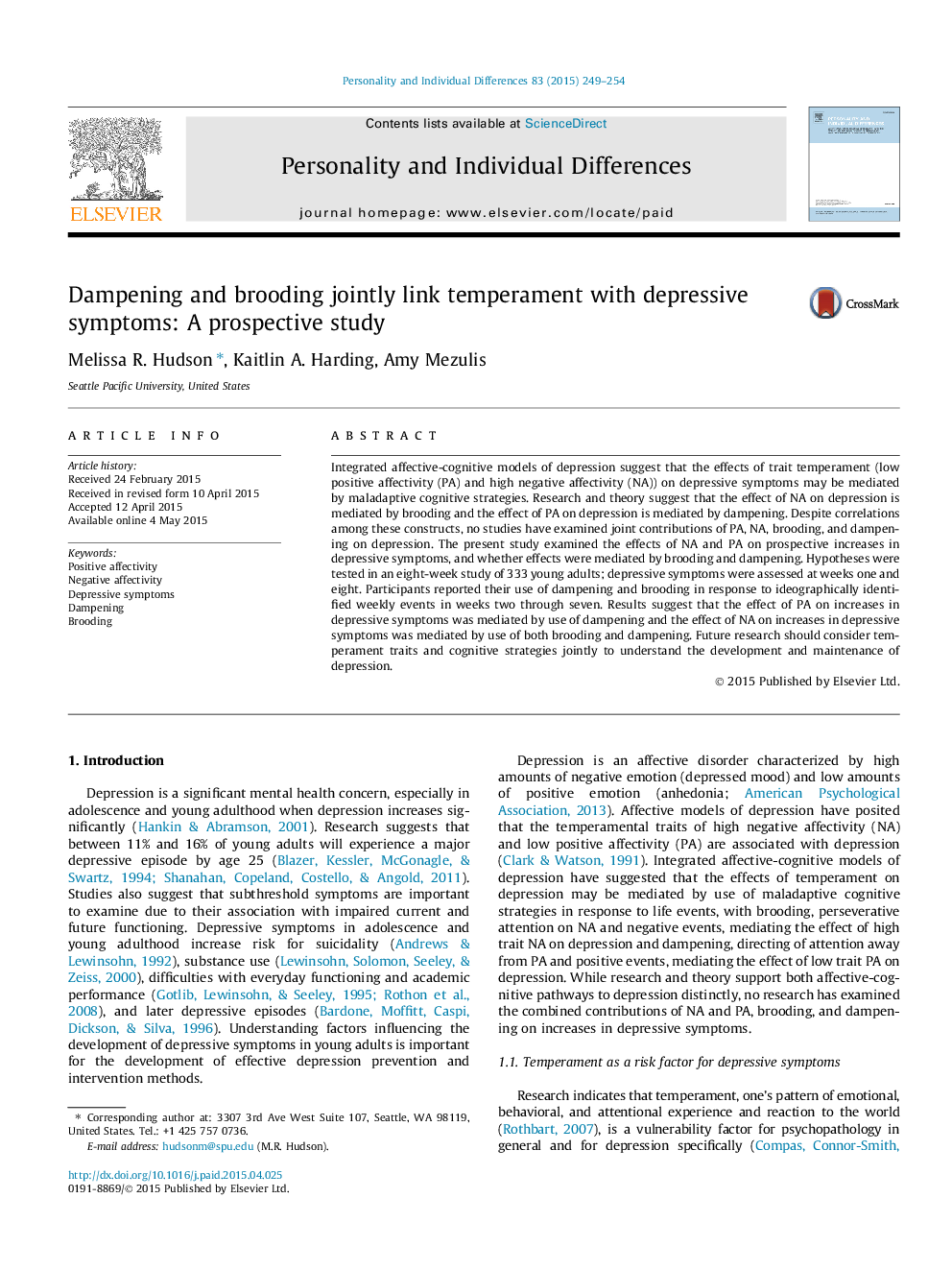| Article ID | Journal | Published Year | Pages | File Type |
|---|---|---|---|---|
| 890161 | Personality and Individual Differences | 2015 | 6 Pages |
•Positive affectivity and negative affectivity predicted depressive symptoms.•PA predicted use of dampening and NA predicted use of brooding and dampening.•Dampening partially mediated the effect of low PA on depressive symptoms.•Dampening and brooding fully mediated the effect of high NA on depressive symptoms.
Integrated affective-cognitive models of depression suggest that the effects of trait temperament (low positive affectivity (PA) and high negative affectivity (NA)) on depressive symptoms may be mediated by maladaptive cognitive strategies. Research and theory suggest that the effect of NA on depression is mediated by brooding and the effect of PA on depression is mediated by dampening. Despite correlations among these constructs, no studies have examined joint contributions of PA, NA, brooding, and dampening on depression. The present study examined the effects of NA and PA on prospective increases in depressive symptoms, and whether effects were mediated by brooding and dampening. Hypotheses were tested in an eight-week study of 333 young adults; depressive symptoms were assessed at weeks one and eight. Participants reported their use of dampening and brooding in response to ideographically identified weekly events in weeks two through seven. Results suggest that the effect of PA on increases in depressive symptoms was mediated by use of dampening and the effect of NA on increases in depressive symptoms was mediated by use of both brooding and dampening. Future research should consider temperament traits and cognitive strategies jointly to understand the development and maintenance of depression.
